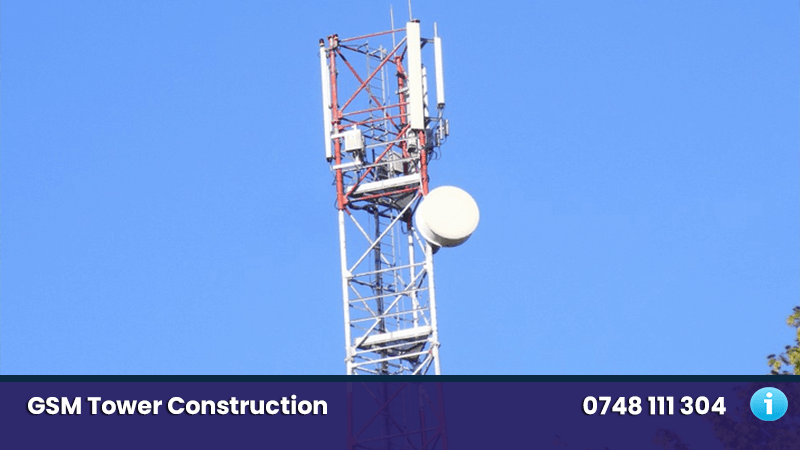GSM Masts & Towers Installation in Kenya: A Comprehensive Guide
Introduction
In Kenya, the installation of GSM Masts & Towers plays a crucial role in establishing reliable communication networks across the country. These structures facilitate the transmission of mobile signals, enabling seamless connectivity for users. However, like any infrastructure project, GSM Masts & Towers Installation comes with its set of challenges and complexities. In this article, we will delve into the process of installation, common problems encountered, their solutions, types of accessories used, and the estimated costs involved.
Understanding GSM Masts & Towers Installation
GSM Masts & Towers Installation involves the setup of structures designed to support antennas and other telecommunication equipment necessary for transmitting and receiving mobile signals. These installations are strategically placed to ensure optimal coverage and connectivity for mobile users in various regions of Kenya.
Common Problems and Solutions
1. Site Selection Challenges
- Problem: Identifying suitable locations for GSM Masts & Towers Installation can be challenging due to factors such as terrain, regulatory restrictions, and community concerns.
- Solution: Conducting thorough site surveys and consultations with relevant stakeholders to identify optimal locations that meet regulatory requirements and community acceptance criteria.
2. Permitting and Regulatory Compliance
- Problem: Obtaining permits and ensuring regulatory compliance can be time-consuming and bureaucratic.
- Solution: Engaging with regulatory authorities early in the planning process, adhering to established guidelines, and seeking professional assistance to navigate the permitting process efficiently.
3. Structural Integrity and Stability
- Problem: Ensuring the structural integrity and stability of GSM Masts & Towers in varying environmental conditions.
- Solution: Employing qualified structural engineers to design and assess the structural integrity of installations, using high-quality materials, and implementing regular maintenance and inspection protocols.
4. Power Supply Reliability
- Problem: Ensuring reliable power supply to GSM Masts & Towers installations, especially in remote or off-grid locations.
- Solution: Implementing backup power solutions such as solar panels, generators, or battery systems to ensure continuous operation in case of power outages.
Types of Accessories Used
1. Antennas
- Antennas are crucial components for transmitting and receiving signals. They come in various types, including omni-directional and directional antennas, each suited for specific coverage requirements.
2. Mounting Hardware
- Mounting hardware includes brackets, clamps, and fasteners used to securely attach antennas and other equipment to the mast or tower structure.
3. Cables and Connectors
- High-quality cables and connectors are essential for maintaining signal integrity and minimizing signal loss in the transmission line.
4. Lightning Protection Systems
- Lightning protection systems are vital for safeguarding GSM Masts & Towers and associated equipment from damage caused by lightning strikes.
Estimated Costs
The costs associated with GSM Masts & Towers Installation in Kenya can vary depending on factors such as site location, terrain, equipment specifications, and regulatory requirements. However, a rough estimate for installation services and labor charges ranges from Ksh 1,000,000 to Ksh 5,000,000.
GSM Masts & Towers Installation plays a critical role in enhancing communication infrastructure and connectivity in Kenya. Despite the challenges involved, careful planning, adherence to regulatory requirements, and the use of high-quality equipment and accessories can ensure the successful implementation of these installations. By addressing common problems proactively and leveraging suitable solutions, stakeholders can contribute to the development of robust and reliable mobile networks across the country.
By incorporating best practices and innovative solutions, GSM Masts & Towers Installation in Kenya can continue to evolve, providing essential connectivity services to both urban and rural communities

